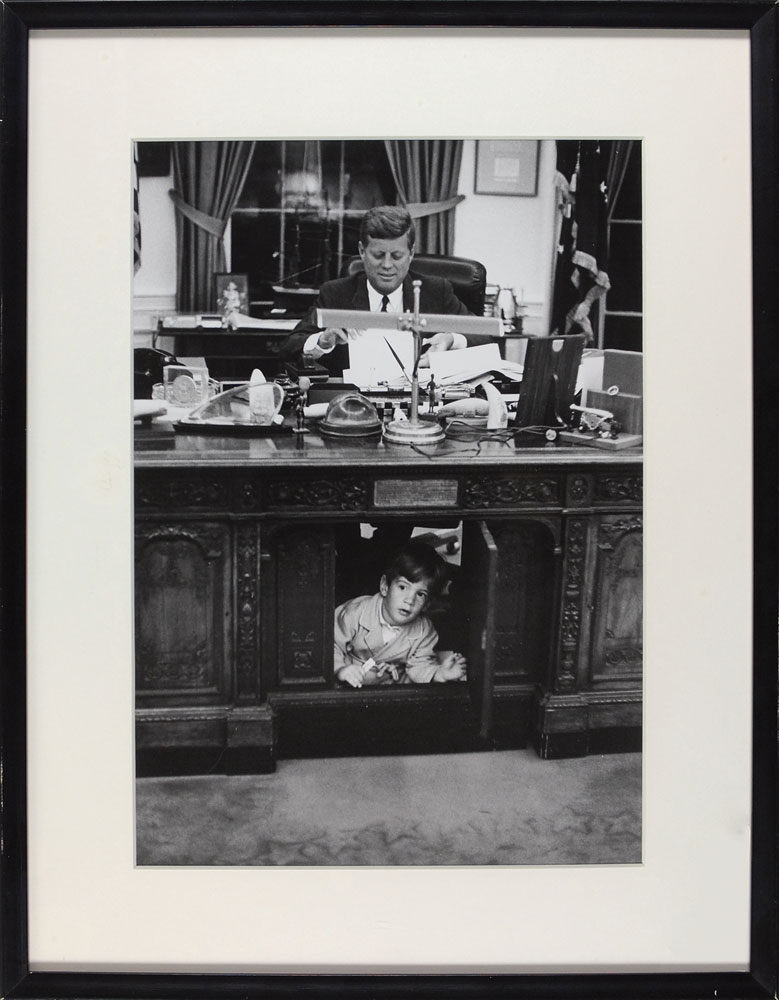by Brooke Kennedy
“There’ll be great presidents again… but there will never be another Camelot.”
This coming November, RR Auction will be commemorating the 60th anniversary of Kennedy’s assassination with our 60th Anniversary JFK auction. Our 50th Anniversary auction was a tremendous success with hammer prices that exceeded our expectations, so we’d like you to consign with us once again. Browse our offerings from our previous 50th Anniversary auction to see if your items will be a good fit. Our consignment deadline is September 27th, 2023, so don’t hesitate to hit the button below to begin the consignment process or call us at 800-937-3880 to see how well your JFK items could do at auction.
60 Years Ago
The life and assassination of President John F. Kennedy continues to fascinate and confound historians 60 years later. People still question what really happened in Dallas that day, but what is concrete is what led up to Kennedy’s final moments. His final phone call. His final car ride. And a final goodbye.
On November 21st – just before Kennedy’s ride through Dallas – Fort Worth’s Hotel Texas was preparing the presidential suite for the arrival of the president and the First Lady. Making beds, adorning the walls with artwork, and fluffing pillows. Museums and private collectors happily lent out their work for President Kennedy’s Suite, but what really made his room unique was the specially made rotary telephones that Kennedy used to make his final phone call. The White House embellishments highlight the attention to detail the hotel staff put into the room for the First Couple – and their painstaking preparations paid off.
“When President and Mrs. Kennedy arrived at the Hotel Texas in Fort Worth, on November 21, they found the Presidential Suite, #850, perfectly to their liking,” wrote RR Auction when the phones hit the auction block in 2013, “from the priceless artwork adorning the walls to the two Southwestern Bell phones installed just for their brief stay.” Originally estimated at $5,000, this pair of the rotary phones from the hotel suite sold for $31,850.
Shortly after their stay, the Kennedys were en route to Dallas along with Texas Governor John Connally via a white Lincoln Continental car. Photographs from that morning showcase a hopeful scene with crowds seeing the president off before his flight. Jackie Kennedy appears in her iconic pink Chanel suit and pillbox hat along with JFK and Governor Connally smiling and waving at onlookers.
“This car was…the last automobile to safely carry Kennedy before his tragic death in Dallas, making it a historically significant and one-of-a-kind piece marking the end of Camelot.”
Coined by Jackie Kennedy, the theme of Camelot encapsulates the youth and vitality of JFK’s time in office. At the time, Kennedy – compared to previous presidents – brought a new sense of youth to his presidency. At 43 years old, Kennedy remains the youngest president elected to office, and his wealthy upbringing and various social connections made him quite fashionable. By likening JFK to King Arthur, Jackie built an everlasting memory of his presidency – but no other artifacts display this old myth quite like one of the president’s photographs.

Hung inside the White House you could find this playful portrait taken by journalist Stanley Tretick in October of 1963. Jackie Kennedy is well known for her desire to keep her children out of the public eye, but JFK – savvy with public relations – understood the importance of public image. As a good friend of JFK, Tretick was awarded exclusive access to the White House by Kennedy himself. Therefore, while Jackie was out of the country for work, JFK allowed Tretick to follow Kennedy and his son, John, Jr., around the White House to gather material for an article on the father-son duo.
One of the journalist’s most famous images, Tretick captured the mischievous John, Jr. peeking out from underneath his father’s oval office desk as he worked – an image that perfectly showcased JFK’s values as a leader and a father. The photograph – a favorite of JFK – found its place on one of the White House Walls before being taken down a month later on November 22 – a sad goodbye to the Kennedy the nation knew.
While there are facts we may never know about what happened in Dallas on November 22nd, the pieces left behind continue the tale of Kennedy’s Camelot. His final phone calls and his final drive provide insight into his last days, but historians still find more fascination in Kennedy’s devotion – as a leader and as a father.


